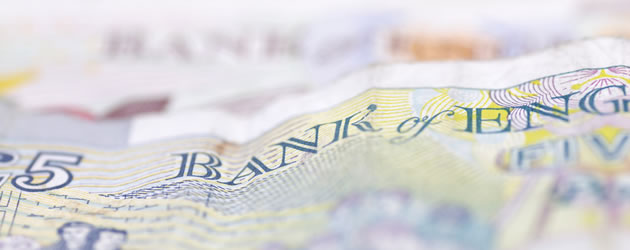 The Pound to US Dollar exchange rate (GBP/USD) declined by around a third of a cent yesterday to mark the ninth day in twelve that Sterling has depreciated against the ‘Greenback’.
The Pound to US Dollar exchange rate (GBP/USD) declined by around a third of a cent yesterday to mark the ninth day in twelve that Sterling has depreciated against the ‘Greenback’.
The catalyst behind yesterday’s dip was the release of July’s Bank of England minutes report, which showed that the nine-person Monetary Policy Committee (MPC) was unanimous in its decision not to raise interest rates this month.
With unemployment at a 6-year low, inflation now close to the bank’s 2.0% target and house prices rising at a rapid pace, some traders had hoped for a contested vote. This would have been taken as a strong sign that policymakers intend to begin tightening policy before the end of 2014.
As it is, the 9-0 vote in favour of holding the 0.50% interest rate suggests that there is an equal chance of a rate hike in Q4 this year or Q1 next year. The minutes showed that the MPC is happy with the pace of GDP growth and that members are optimistic with regards to the pace of job creation. But comments on the lack of real wage growth explain why policymakers did not decide to vote in favour of a hike this time out:
“The weakness of wages in the face of strong rises in employment was becoming more striking…an unexpected increase in interest rates when real wages were not yet rising could lead to an outsized reaction in asset prices and destabilise the recovery”.
Later in the day BoE Governor Mark Carney gave a speech in Glasgow during which he struck a slightly more hawkish tone. Carney said that if interest rates were left at rock-bottom lows for too long then it could tip the economy back into recession, but reiterated that wages would need to start rising before the bank would begin its hiking cycle.
With unemployment, inflation and economic growth now at appropriate levels it looks very likely that BoE will start to raise rates when average earnings start to increase.
However, until that happens Sterling is liable to struggle against the US Dollar. Geopolitical concerns, strong labour market gains and hopes that inflation could be on the rise have caused investors to drive the value of the ‘Greenback’ higher in recent weeks.
Although the BoE is widely expected to start raising rates before the Federal Reserve, it is still believed that the Pound to US Dollar exchange rate is overvalued. Earlier in the week GBP/USD struck a 5.5-year high of 1.7192 but since then Sterling has slid by over -1.5 cents to 1.7030. According to a speculative sentiment index 83% of retail forex traders are now short GBP/USD meaning that there is scope for further losses.
Extraordinarily strong US labour market or inflation figures could push Sterling lower, as could another quarter of falling real wages in Britain.
However, the next major event on the economic calendar is tomorrow’s second quarter UK GDP report. If the data shows an expansion of 0.9% or higher then it could lend the Pound some support in the short term.
The Pound to US Dollar (GBP/USD) exchange rate is currently trading in the region of 1.7043.

Comments are closed.